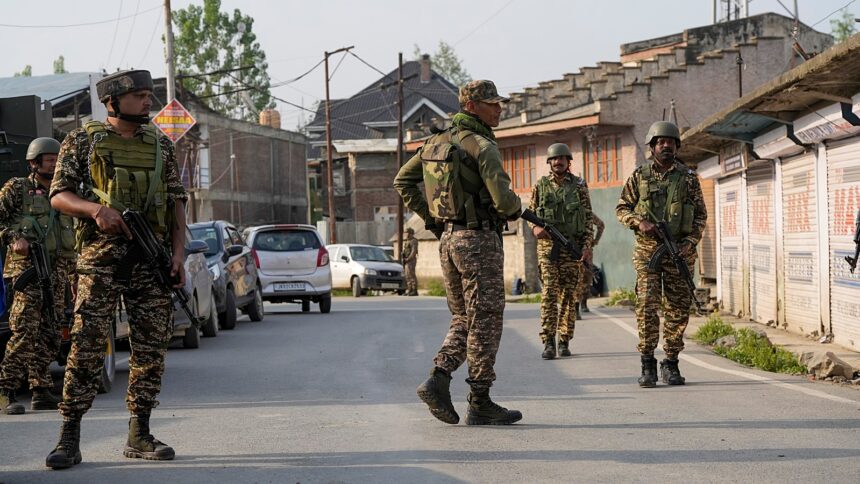By naming the operation to hit terrorist infrastructure at nine sites in Pakistan and Pakistan-occupied Kashmir as Operation Sindoor, the Indian defence establishment has made a marked shift – from the projection of military power to paying tribute to the victims of the Pahalgam terror attack. Government sources indicate the name of the operation was chosen by Prime Minister Narendra Modi himself and could be seen as a tribute to the women who lost their husbands in the April 22 attack at the Baisaran meadow that killed 25 tourists and a local.
Almost all past military operations by India against Pakistan have largely had conventional military names to inspire confidence internally and send a message of strength externally. Sometimes names were chosen to maintain the secrecy of the operation, and, at times, names were even drawn from Indian mythology.
In the past, India has used names such as Operation Riddle, Operation Ablaze, Operation Cactus-Lily, Operation Trident, Operation Python, Operation Meghdoot, Operation Vijay, Operation Safed Sagar, and Operation Bandar in conflicts with Pakistan.
Here’s a look at some of the past military operations by India against Pakistan:
1. Operation Riddle (1965 Indo-Pak War)
Operation Riddle was the Indian military’s response to the offensive launched by Pakistan under the code names of Operation Gibraltar and Grand Slam in 1965. As Pakistan violated the Line of Control (LoC) and entered and Kashmir, India launched this operation, targeting Lahore and Kasur on September 6, 1965. The operation had a crippling effect on the Pakistan military.
2. Operation Ablaze (1965 Indo-Pak War)
Operation Ablaze, too, was in the context of the 1965 Indo-Pak war. Launched as a defensive strategy on the western border, Operation Ablaze was the Indian Army’s pre-emptive mobilisation plan in April 1965, following rising tensions and skirmishes along the India-Pakistan border, particularly in the Rann of Kutch area. Although it did not immediately result in direct combat, this large-scale mobilisation demonstrated India’s readiness. The operation set the stage for heightened military preparedness before the full-fledged war broke out in August 1965.
Outcome: The two operations effectively pushed back Pakistan and led to the Tashkent Agreement brokered by the Soviet Union.
3. Operation Cactus Lily (1971 Indo-Pak War)
Operation Cactus Lily, also known as The Meghna Heli Bridge or the Crossing of the Meghna, was an air assault operation conducted in December 1971 during the Bangladesh Liberation War. It was conducted by the Indian Army and Indian Air Force to cross the Meghna River, bypass a Pakistani stronghold at Ashuganj/Bhairab Bazar and reach Dhaka.
4 & 5. Operations Trident and Python (1971 Indo-Pak War)
Both were offensive operations launched by the Indian Navy on Pakistan’s port city of Karachi during the Indo-Pak War of 1971. Operation Trident saw the first use of anti-ship missiles in combat in the region. The operation was conducted on the night of December 4-5, 1971 and inflicted heavy damage on Pakistani vessels and facilities.
Outcome: Pakistan lost and Bangladesh was created.
6. Operation Meghdoot (Siachen conflict)
By 1984, Pakistan’s cartographic aggression in the uncharted territory of Ladakh, allowing foreign mountaineering expeditions in Siachen, was becoming a cause of concern. Having received intelligence inputs about an impending Pakistani military action in the area, India decided to thwart Pakistan’s efforts to legitimise its claim on Siachen.
The Indian Army launched Operation Meghdoot in April 1984 to secure strategic heights on Siachen with the deployment of troops. The IAF transported stores and troops and air-dropped supplies to high-altitude airfields, from where -17, Mi-8, Chetak, and Cheetah helicopters ferried men and material to dizzying heights on the glacier.
Soon, about 300-odd troops were positioned on the strategically important peaks and passes of the glacier. By the time the Pakistan army reacted by advancing its own troops, the Indian Army was occupying strategically crucial mountain peaks and passes.
Outcome: India gained a significant tactical advantage against Pakistan in the region.
7. Operation Vijay (1999 Kargil conflict)
Operation Vijay was the codename for the Indian military operation launched in May 1999 to reclaim areas occupied by Pakistani forces during the . The operation successfully forced Pakistani troops to withdraw and recapture critical positions, leading to India’s victory.
8. Operation Safed Sagar (1999 Kargil conflict)
Operation Safed Sagar was the codename for the Indian Air Force’s role in the 1999 Kargil War. It involved a series of airstrikes to flush out Pakistani troops from Indian positions in the Kargil sector along the Line of Control. This was the first large-scale use of air power in the region since the 1971 Indo-Pakistani War.
Outcome: India successfully regained all strategic heights in Kargil.
8. Unnamed operation (2016 surgical strikes)
This operation, conducted by Indian special forces in response to the Uri attack, was not given any specific name other than surgical strikes. It targeted terrorist launch pads across the LoC in Pakistan-administered Kashmir.
Outcome: Marked a shift toward proactive counter-terror operations.
9. Operation Bandar (2019 air strikes)
This was in response to the February 2019 attack by operatives of the Jaish-e-Mohammed on a CRPF convoy in Jammu and Kashmir that killed 40 soldiers. Under Operation Bandar, the Indian Air Force carried out air strikes on a Jaish-e-Mohammed training camp in Balakot, Pakistan, where it claimed to have killed several terrorists.
Outcome: The first air strike across the LoC since 1971, it sparked brief aerial skirmishes between the two countries.








